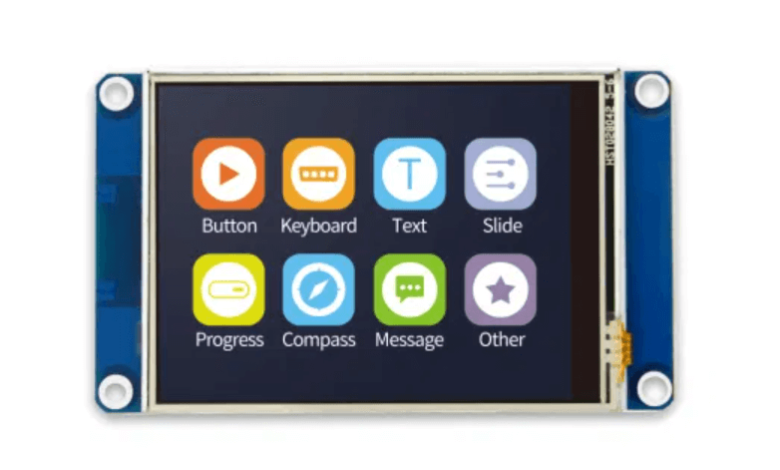Understanding The Importance Of fstn lcd module In Technology

Introduction
Display technology has become an essential part of modern devices, from medical equipment to industrial machines. Among the many display solutions available today, the fstn lcd module has gained attention for its balance of performance, efficiency, and cost-effectiveness. While high-resolution displays like OLED and TFT dominate consumer electronics, the fstn lcd module continues to serve in industries where reliability, readability, and affordability matter most.
What Is FSTN LCD Module
The fstn lcd module, short for Film Compensated Super Twisted Nematic liquid crystal display module, is an advanced version of the STN display. It uses a compensation film to reduce the unwanted color shifts often seen in fstn lcd module traditional STN panels, providing sharper contrast and better readability. When assembled as a module, it integrates backlighting, driver circuits, and sometimes touch features, making it ready for use in a wide range of devices.
Key Features Of FSTN LCD Module
Several features make the fstn lcd module unique compared to other display options:
- High contrast ratio that improves text and graphic clarity
- Wide viewing angles that enhance user experience
- Low power consumption, ideal for battery-powered devices
- Affordable production costs, reducing overall device expenses
- Strong outdoor readability, suitable for bright environments
These features make it an excellent choice for applications where functionality outweighs luxury visuals.
See also: Unlocking Bookkeeping Secrets for Business Growth Tech Trends Gfxprojectality
Advantages Over Other Displays
The fstn lcd module provides a number of advantages over competing display technologies:
- Compared to STN: Enhanced visibility and reduced color tint.
- Compared to TFT: More energy-efficient and less expensive to produce.
- Compared to OLED: Longer-lasting in outdoor conditions without burn-in risks.
- Compared to TN LCD: Better contrast and ability to display more complex graphics.
This balance of benefits ensures that the fstn lcd module remains widely adopted despite competition from more advanced displays.
Limitations Of FSTN LCD Module
Like all display technologies, the fstn lcd module has its limitations. Some drawbacks include:
- Slower response times than TFT or OLED displays
- Limited color range, making it less suitable for multimedia applications
- Lower refresh rates, which restrict performance in fast-motion graphics
- Less appealing aesthetics compared to newer technologies
Despite these drawbacks, the fstn lcd module is still highly practical in industries where power efficiency and durability take priority.
Common Applications
The fstn lcd module is used in many different areas because of its reliability and affordability. Common applications include:
- Automotive dashboards and control panels
- Handheld measurement instruments
- Industrial equipment displays
- Medical monitoring devices
- Consumer electronics such as calculators and remote controls
In all these applications, the focus is not on vibrant graphics but rather on durability, readability, and cost control.
Technological Advancements
Over time, improvements have been made to the fstn lcd module to enhance its performance. Modern versions offer stronger backlighting, sharper contrast, and longer lifespan. Some manufacturers have introduced hybrid designs, combining the strengths of multiple LCD technologies to deliver better performance while keeping costs under control.
Industry Adoption And Market Trends
The market for fstn lcd module technology remains strong, particularly in sectors where energy efficiency and readability matter more than entertainment-grade visuals. Healthcare, industrial, and automotive industries continue to demand these modules, ensuring steady production and innovation. The cost advantage also makes them attractive to businesses looking to manage budgets while maintaining product reliability.
Comparison With Modern Alternatives
While TFT and OLED dominate the consumer electronics landscape, the fstn lcd module stands out for its durability and lower power requirements. For instance, OLED may deliver vibrant images, but it is prone to burn-in issues and higher manufacturing costs. TFT, on the other hand, offers excellent speed but consumes significantly more energy. The fstn lcd module strikes a balance by providing clear visuals without excessive energy use.
Future Prospects
Looking ahead, the fstn lcd module is expected to maintain a niche position in the market. As industries continue to demand affordable and reliable displays, this technology will remain relevant. Although it may never compete with OLED or TFT in terms of visual quality, its strength lies in serving specialized sectors that prioritize long-term performance and cost-efficiency.
Conclusion
The fstn lcd module is a testament to how certain technologies continue to thrive despite rapid innovation in the display industry. With its balance of readability, durability, and affordability, it continues to serve industries such as healthcare, automotive, and industrial applications. While not designed for high-end multimedia, the fstn lcd module ensures practicality and reliability, proving that advanced performance is not always about the latest technology but about meeting the right needs effectively.



